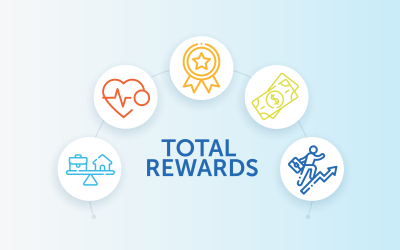Effective workforce planning is impossible without a solid foundation—and that foundation is people analytics. Only when you understand your data can you make informed decisions about how to shape and manage your workforce.
Let’s discuss how a workforce analytics solution can optimize your HR planning.
What is workforce planning?
Workforce planning takes a more strategic approach to hiring, aligning a business’s workforce with its long-term goals. By definition, workforce planning is data-driven, relying upon internal and external analytics to identify gaps, project future needs, and optimize a business’s use of human capital.
Today’s competitive landscape means it’s not enough to simply hire the people who “click” with your organization. Instead, HR must ensure that their workforce has the right people at the right time with the right skills to carry out an organization’s business objectives.
Optimizing workforce planning with people analytics
People analytics provides data HR professionals can use to inform workforce planning decisions. HR teams can gain insights into attrition, turnover, job performance, skills development, recruitment strategies, and more.
Understanding the big picture
SHRM divides the workforce planning process into four distinct phases:
- Supply analysis uses internal people analytics data to evaluate the organization’s current labor supply.
- Demand analysis is an overview of the future of a business, including its long-term plans and objectives.
- Gap analysis finds the gap between the supply and demand, pinpointing those areas where the current workforce will fall short of future needs.
- Solution analysis involves creating a plan to address these gaps.
Each of these steps relies upon internal data, external data, or both. Internal data may include retention rates, age of workforce, DEIB metrics, and skills. Important external data includes information on the overall labor market, as well as the specific industry and competition.
Determining your objectives—and monitoring your progress
With the necessary people analytics on hand, it’s time to create KPIs based on your workforce planning. Use your solution analysis to develop objectives for your HR department, then create KPIs centered around these goals.
KPIs help you measure how well your organization is doing—both where you’re excelling and where you need to put in more work. A nimble workforce analytics solution will allow you to create custom KPIs and build insight dashboards around them, giving you the ability to monitor your progress at a glance.
For example, the City of Detroit uses a custom-built people analytics dashboard to support a workforce of over 9,000 employees, using data from disparate systems to form a single source of truth.
The importance of workforce planning insights
Of course, collecting data and analyzing it is only the beginning. Here’s how to put your people analytics to use:
- Planning for the future and reaching long-term goals. By anticipating potential changes in the labor market, organizations can develop strategies to ensure they have a well-equipped workforce ready to meet future challenges.
- Reducing inefficiencies. Workforce planning helps organizations save money by optimizing their human capital, reducing the expenses of recruiting and training new employees.
- Making data-driven hiring and promotion decisions. People analytics on current employee demographics, skill sets, and external labor market trends allow organizations to make well-informed decisions as they shape their future workforce.
- Improving recruitment and retention of top talent. Understanding the skill sets needed for particular jobs, as well as external labor market trends, allows businesses to create more effective recruitment strategies. In addition, people analytics provides insights into employee performance and satisfaction, helping organizations develop targeted retention programs that keep staff engaged and productive.
- Continuous improvement of business objectives (e.g., DEIB, L&D). Data-driven insights into DEIB and other high-level business objectives give your team the necessary information to ensure you’re creating a diverse, equitable workforce—and that you’re able to take action in areas where your organization falls short.
Choosing a workforce analytics solution
The days of crunching the numbers yourself are over—there are a number of people and workforce analytics solutions on the market that gather and analyze data for you. Here’s what to look for:
Actionable, easy-to-understand data—not simply numbers
Data visualization is key to using your data to take action. With ZeroedIn, our technology helps you understand what the numbers mean so you can use your people analytics to improve your workforce.
Single source of truth
Having clean, consolidated, and trustworthy datasets is essential for accurate reporting and gaining meaningful insights. You don’t want to have to second-guess or piece together your workforce analytics solution.
Intuitive, approachable platform
Any effective people analytics solution will be user-friendly and easy to navigate. Look for an intuitive platform that allows your HR team to easily view workforce information, along with the ability to customize dashboards and reports so your team can focus on the data that’s most important.
Secure environment
Data security and privacy are essential when dealing with workforce analytics. Ensure that any solution you consider for your organization has robust security measures in place to protect confidential data.
Customized, turnkey solution
A turnkey solution will allow you to seamlessly implement analytics into your existing systems, but you also want to be able to customize your people analytics solution to make it work for you. ZeroedIn is the only solution on the market that delivers both.
Connect with ZeroedIn
ZeroedIn is a white-glove workforce analytics solution that customizes the tools you need to make confident, data-driven decisions in your workforce planning. Contact us to learn more about how people analytics can transform your HR processes.
Sources:
https://www.shrm.org/resourcesandtools/tools-and-samples/toolkits/pages/practicingworkforceplanning.aspx
https://www.gartner.com/en/human-resources/insights/workforce-planning
https://www.forbes.com/advisor/business/workforce-planning/
https://www.myhrfuture.com/blog/how-to-create-a-data-driven-approach-to-workforce-planning
https://www.forbes.com/sites/paologaudiano/2022/10/05/seven-sets-of-metrics-that-will-help-you-define-and-achieve-dei-goals



